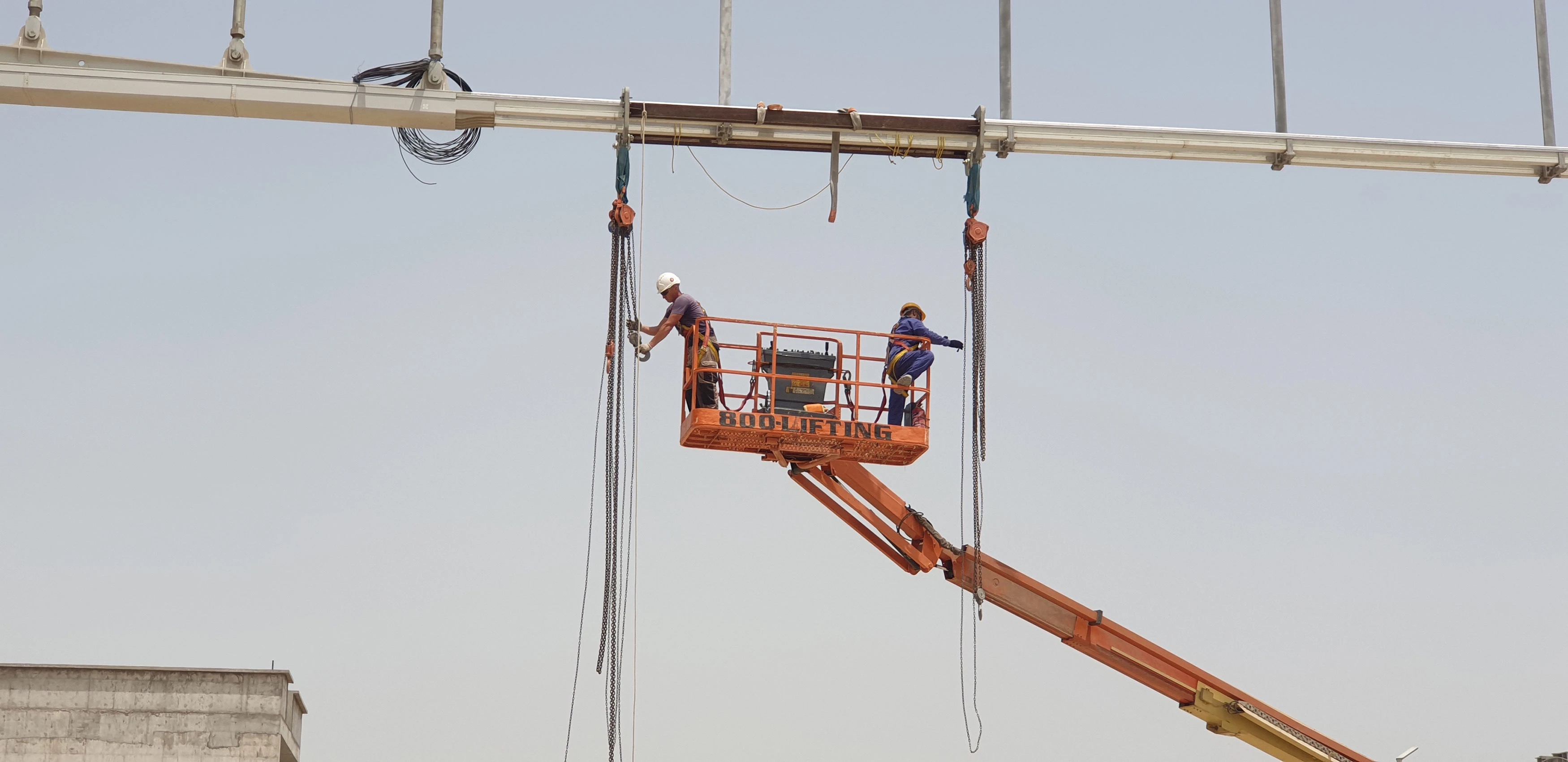Static testing of string-rail track structure by applying design load, as well as testing of any other transport flyovers, is one of the final stages of this project. If we describe this process from a technical point of view, it looks like this.

The most supportable way to test a track structure is to load it with weight of vehicle and measure the required parameters, in particular, determining the amount of deformation (deflection) of the span under load, which determines such performance characteristics as smooth and comfortable movement of rolling stock. However, vehicle is expensive equipment and it is ill-advised to risk it during tests. Therefore, for static loading, four separate loads of required weight were used suspended from track structure at check points. Distance between the loads matches the vehicle wheelbase.

This kind of loading has two main purposes: determination of geometric parameters, such as deflections in the middle of spans, deflections of beams on intermediate supports, and verification of loading-carrying ability of both individual units and chords of the track structure as a whole.

With each of the check points loaded, surveyor performs measurements of their heights within the studied track span. Currently, deviation of real sinusoidal trajectory of track structure from design one does not exceed 5% (the radii of track’s vertical curvature in this case are at least 2,000 m), which will not affect smoothness of rolling stock motion. Indeed, 5% is actually the sum total of inaccuracies in the manufacturing and installation of all structural elements, which shows a painstaking approach at all stages of the project.

Also, during static loading, no abnormal deformation of any part or assembly was detected. Quality control of production and installation has always been a priority for our company.
From layman’s point of view, the result of the static tests is the authorization to place the vehicle on this track structure. And thus, to conduct another series of tests to confirm the safety, comfort and reliability of the uSky transport complex.

